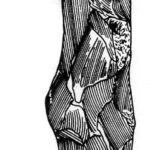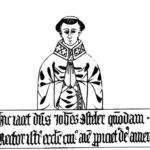A timeline of the history of Hayes. You can read more detailed articles using the links on each box.

From the earliest times there has been evidence for the existence of humans in the area now known as Hayes. It was archaeologists in late Victorian times who first excited local attention with a number of finds and subsequently other early Stone Age artefacts have been discovered.

There are fewer signs of stone age activity during this time and often the finds are the result of chance sightings.

Considerable evidence exists for the neolithic period. So much survives that Canon H P Thompson suggested in the 1930s that ‘we should imagine a populous district inhabited by a tribe who, in normal peaceful times, lived in Pit dwellings, keeping their cattle in the enclosures by night to protect them from wolves and thieves, and driving them out to pasture further afield’. In 1964 the West Kent Border Archaeological Group found a large and significant Neolithic site near Baston Manor.
Gradually, stone tools were replaced by the use of bronze for the manufacture of weapons and tools. The increase in human activity in Hayes in the Bronze Age was mainly restricted to the lighter gravel regions in the south where a farmstead covering at least half acre was excavated between 1962 and 1966.
Iron was a much harder metal and cheaper to produce than bronze. There have been suggestions of the existence of a number of iron age sites in Hayes but these remain to be excavated.

No Roman villas have yet been discovered in Hayes but the Romans have left their mark. When the north aisle of the church was built in 1856 pieces of Roman building material were found but the site was not further excavated. The Hayes items that have been found range over almost the four centuries that the Romans remained in Britain.
It is unclear whether or not the next invaders, the Saxons, occupied the land of Hayes. There were settlements in neighbouring Keston and Orpington. The church of Hayes may be the second church mentioned in the Doomsday Book entry for Orpington. Rev. Thomas Hussey in the 1830s said that the shape of the church reflected the normal proportions for a Saxon church.

During the Middle Ages, there is firm evidence both of a church and a small settlement in Hayes. Much of the 1000 acres of land was farmed and used for either pasture or arable. The names of many of the husbandmen (free tenant farmers) and the fields they cultivated are traceable and families such as French, Aleyn and Kechil remained for several centuries. Large areas of woodland remained particularly in the north and east of the parish and were an important resource. The church benefitted from gifts of items such as paintings or money bequeathed in peoples' wills so that prayers would continue to be said for them.

The era of the Tudors was a time of political, religious and economic upheavals, which affected the inhabitants of Hayes in different ways. Some found themselves involved in the wars with France, particularly in the 1540s. Others were part of the local militia drilled in Elizabeth’s I’s reign in case of invasion. Religious changes created differences in the church but the greatest change was in land ownership.

The 17th century saw changes in Hayes as Robert Hall’s new house, Asshleys, was bought and developed by Stephen and Edmund Scott whose family owned it until 1697. The English Civil War affected owners of the major properties but may not have impacted most of the villagers, apart from increased taxation. There are around 48 homes and no more than 60 families are recorded in any decade. The Church encountered significant disturbance from rival preachers in the late 17th century.

As the 18th century progressed considerable changes took place in Hayes. Most significant was the arrival in 1754 of William Pitt, later Earl of Chatham, who purchased the house that became known as Hayes Place. A number of smaller properties were demolished to create his landscaped garden and the road to Beckenham was moved further south. Lawyers, merchants and publishers were amongst those for whom new large houses were built, particularly in the second half of the century. That provided increased opportunities for gardening and domestic work and by 1782 a population of 267 was living in 56 houses. This number had increased to 429 in 80 houses in 1821. Considerable support was required for the ‘labouring poor’ from the parish. In 1791 a Charity School was established for 40 poor children due to the efforts of the rector, Revd John Till, whose ministry lasted 50 years from 1777 to 1827. A gallery was erected in the church for the school children and the choir.

When Queen Victoria came to the throne all the major houses - apart from Baston Manor and the Rectory - were owned or tenanted by women. It was a matriarchal society that did not greatly change until after the death of Williamina Trail in 1862. Twenty years later the arrival of the banker Everard Hambro at Hayes Places dramatically altered the village in the area surrounding his mansion, replacing old cottages and removing the beer-houses, the Alma Arms and the Sun. It was also a time marked by the arrival of the railway which brought an increasing number of day trippers to visit Hayes Common and six speculative houses were built in Bourne Way. The Metropolitan Commons Act 1866 sought to protect the Common from developers but a number of reasonable sized residences were built along its perimeter in the 1870s and 1880s. By 1901 the population numbered 838 in 96 households, which included 15 villas in the newly developed Hayes Road, which was closer to Bromley than to the centre of Hayes. The increase in population resulted in the addition of both north and south aisles to the church which had been led by learned but occasionally controversial rectors.

In 1901 the villagers in Hayes could not have imagined the horror of the war that would unfold in 1914. In the years before the outbreak of the Great War life continued its similar pattern. More villas were built in Hayes Road where 40 were occupied in 1911 and accounted for 197 people out of the total population in Hayes of 925. It was the wealthy in their large houses who had the most impact on the village and determined the main employment opportunities on their estates and farms.
The Great War was a catalyst for enormous change as volunteers rushed to sign up, with over half of the eligible men enlisting by Christmas 1914. By the time the war ended in 1918 few families had been unaffected by the loss of loved ones. Plans were made to commemorate the casualties and people hoped for a better time. Few anticipated the changes that took place by 1921 in the owners and occupiers of eleven of the ‘big houses’, in employment and in the population which in 1921 was 1010 in 222 households.

The 1920s and 1930s were the decades which witnessed the transformation of Hayes from a small rural village with a few substantial houses to a fast growing community with a tenfold increase in the number of dwellings by 1939. Developers became interested as landowners started to sell some of their land in the 1920s but the major trigger for change was the decision by Sir Charles Eric Hambro to sell Hayes Place, its land and the properties in Hayes he inherited after his father Everard’s death in 1924. The turning point was 1931. A new shopping area developed near the railway station in the 1930s, shops were built in Hayes Street opposite the Church and there were more places of worship, additional schools, a cinema and two garages. Hayes Street Farm continued to be important with its prize winning dairy herd.
The Parish Council ceased to exist as responsibility for Hayes was transferred to Bromley Borough Council and the first of many changes to the physical boundary of the parish occurred. The Hayes Village Association was set up in 1933 to fill the gap in local government and to ensure the community’s views were heard.
By 1939 many of the fields of old Hayes, some of the big houses and the nucleus of the village had been swept aside in the name of progress to be replaced by smart new homes that form today’s village.

The announcement of war on 3 September 1939 was almost immediately followed by a false air raid warning siren. Conscription began, volunteers increased for local defence services, schools temporarily closed, families made difficult decisions about evacuating their children and plans were made in the event of invasion. It was a frantic time but the real horror was not felt in Hayes until the air raids started in earnest in July 1940, with damage to buildings and the first casualties occurring in Hayes in September. Raids continued almost every day reaching a climax with 19 separate incidents on 16 April 1941. The Anti-Aircraft guns on the Common, manned by the Royal Artillery, were in action. Units of the Ist Canadian Division, who were part of the Defence forces to repel invaders, also were deployed from 1940. Fire watching continued daily but it was not until June 1944 that a different threat was faced with the first of the flying bombs (V1) falling in Constance Crescent. The last attack was by a V2 on 9 February 1945. It fell on Hayes Gardens Nursery killing Mr & Mrs Grandfield, their son Stanley Jack and Charles Pinhorn. Hayes men and women became used to coping with rationing, making do, fundraising, organising dances and social events and running a United Services Canteen at Ivy Cottage for the many service personnel stationed on the Common. There was great rejoicing when the war finally ended in 1945 but by then there had been 106 civilian and military casualties, 50 houses destroyed and over 1000 houses damaged with shops, inns and the railway station all affected.

Since the Second World War Hayes has continued to grow from a population of about 9,500 in 1950 to almost 16,000 but that figure includes Coney Hall, which was not covered in earlier census returns. The number of houses also almost doubled from 2150 in 1939 to about 4000. The village has changed greatly, although Hayes Common provides a natural southern boundary and farmland to the east - now mainly used for horses, still remains between Hayes and Bromley Common. Changes in Hayes reflect the alterations in society generally. Some sports clubs and other organisations survive, such as the Hayes Village Association that will celebrate ninety years in 2023.